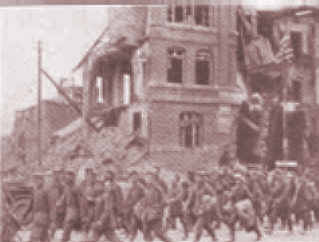The Story of the American Expeditionary Forces |

|
II CORPSIN THEPURSUIT TO THE SELLE |

Prisoners Captured in the Sector

|
After the capture of the St. Quentin canal, the two divisions stayed under British command and were re-deployed north of St. Quentin on October 6th. On the morning of October 7th the 30th Divison attacked from the vicinity of Montbrehain and advanced 10 miles over the next four days. After reaching the banks of the River Selle, they were relieved by the 27th Division which held the river line for six days.
 Major General Edward Lewis
Locate the Sector on a Map of the Western Front.
|
|
Sources and thanks: Compiled by the Editor from American Armies and Battlefields in Europe. Regular contributors Ray Mentzer and Herb Stickel provided the Photos. MH |
To find other Doughboy Features visit our |
Membership Information  Click on Icon |
For further information on the events of 1914-1918
visit the homepage of |
Michael E. Hanlon (medwardh@hotmail.com) regarding content,
or toMike Iavarone (mikei01@execpc.com) regarding form and function.
Original artwork & copy; © 1998-2000, The Great War Society
